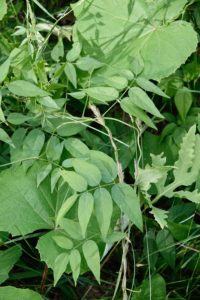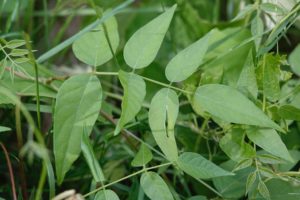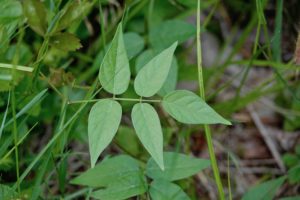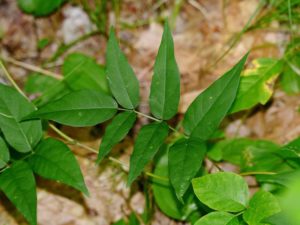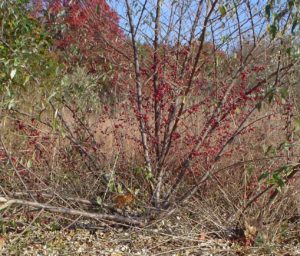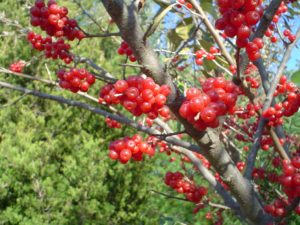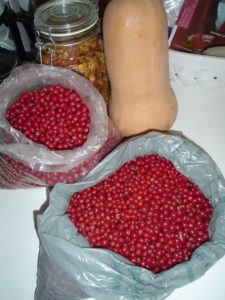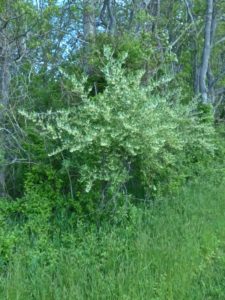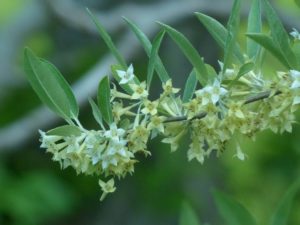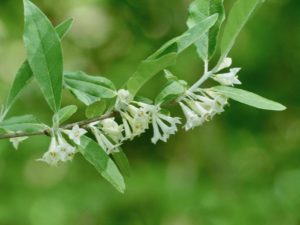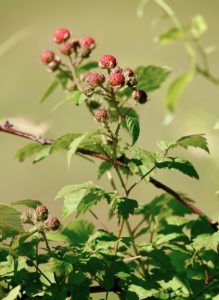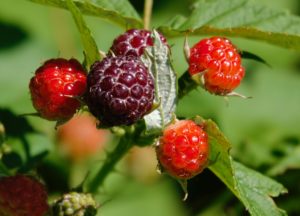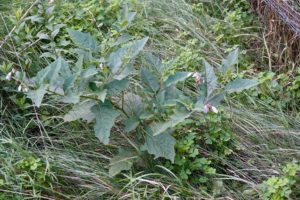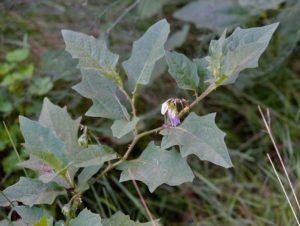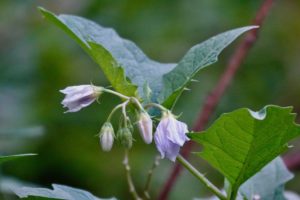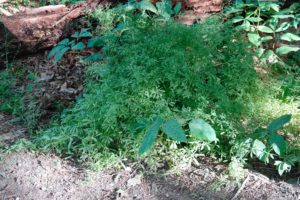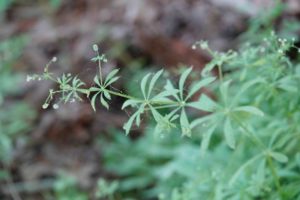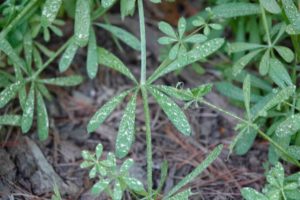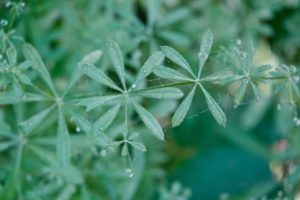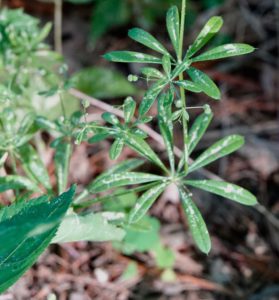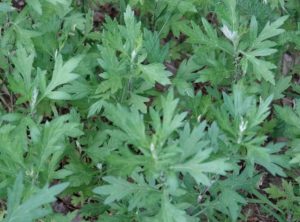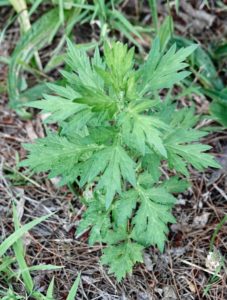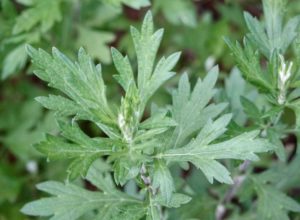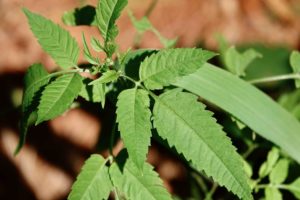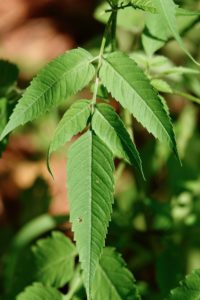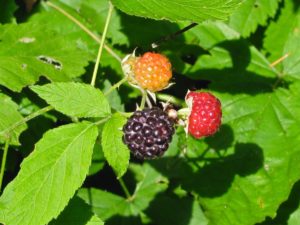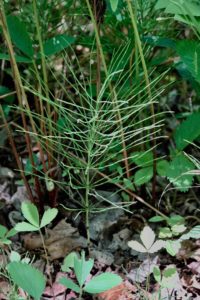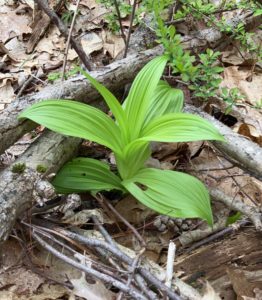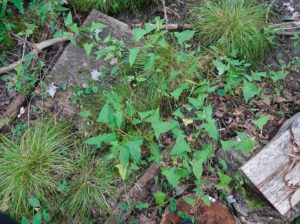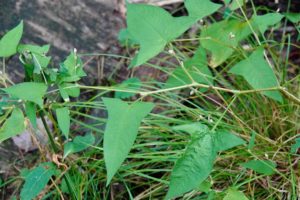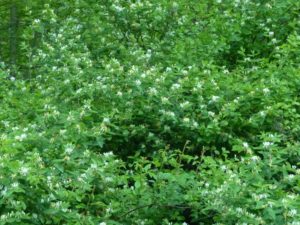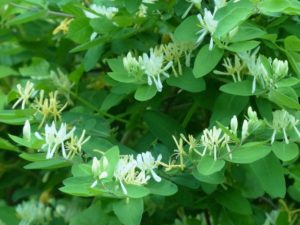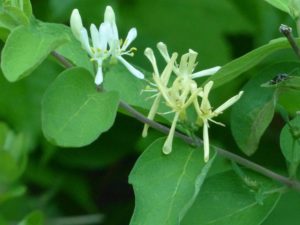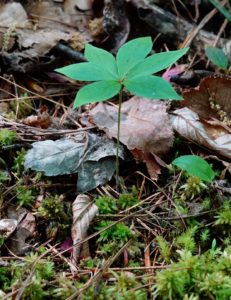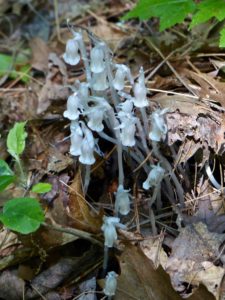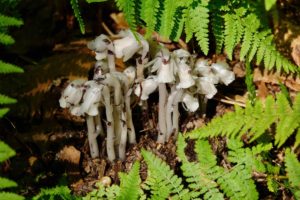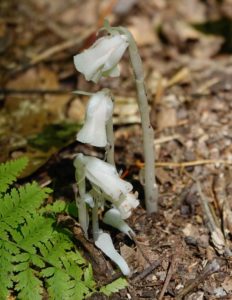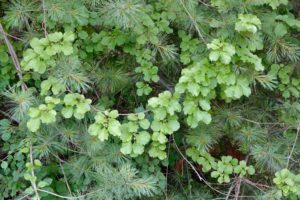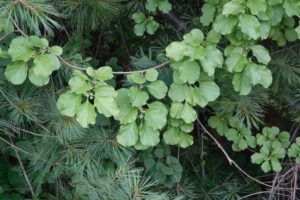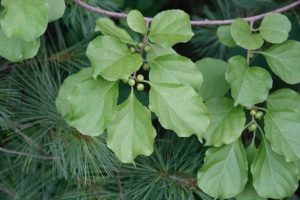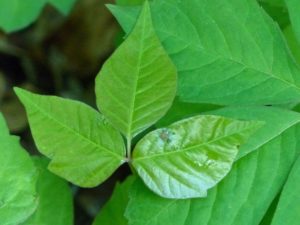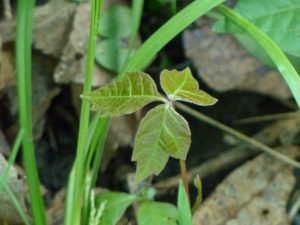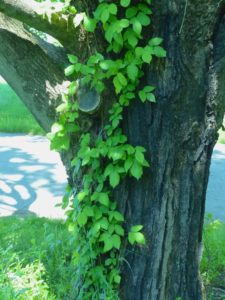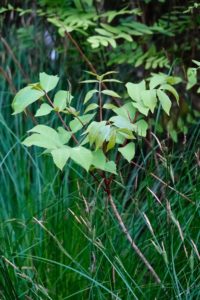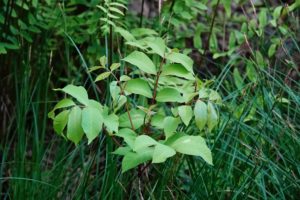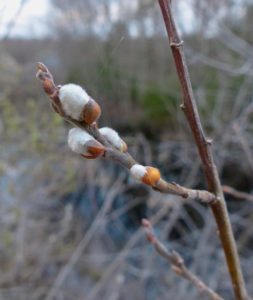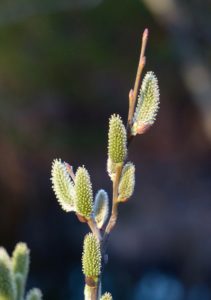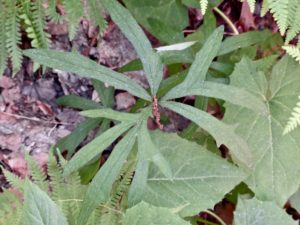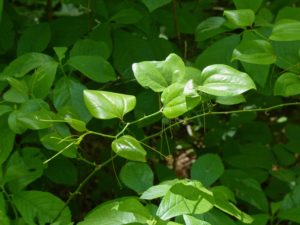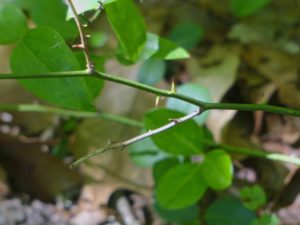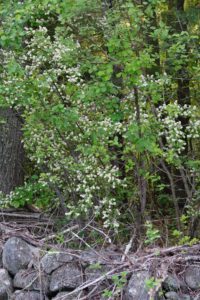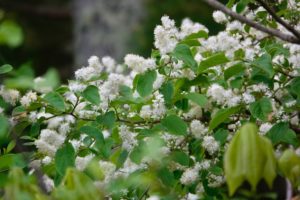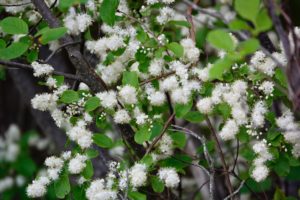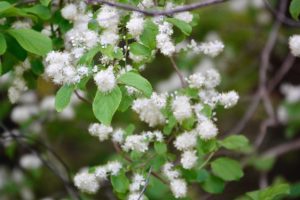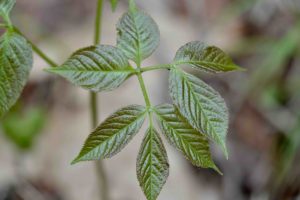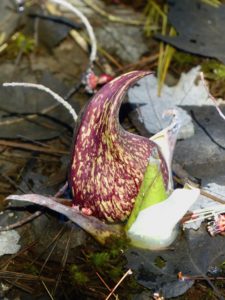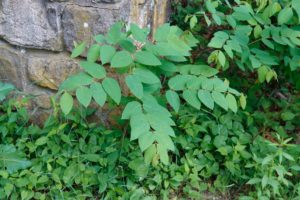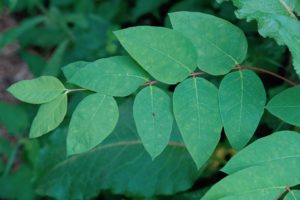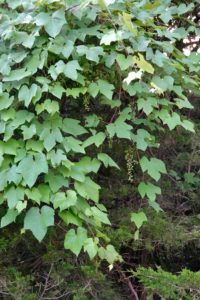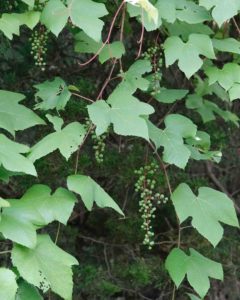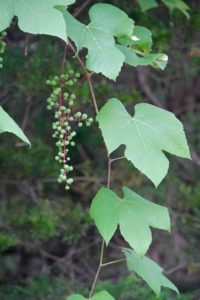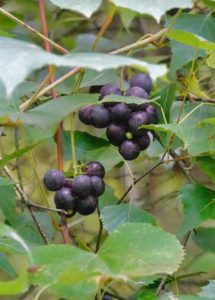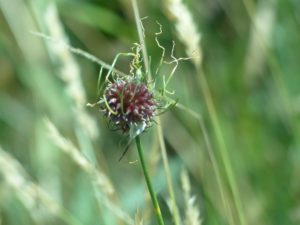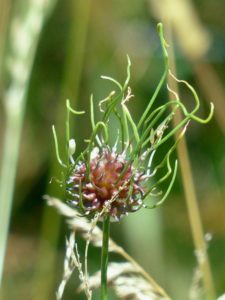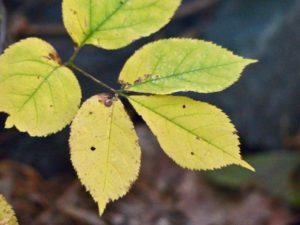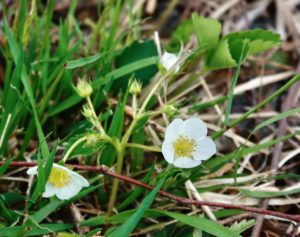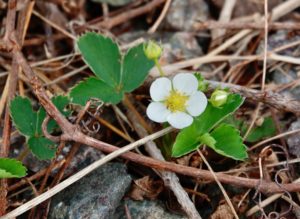Sightings – Other Plants
Observer: Paul Lauenstein
Observation Date: 6/13/20
Observation Time: 5:30 p.m.
Observation Location: Moose Hill Audubon Wildlife Sanctuary
Common Name: American Groundnut
Scientific Name: Apios americana
Comments: Apios americana is found in every state east of the Rocky Mountains. It is a perennial vine that grows to 10 feet long in wet areas – marshy meadows and thickets, stream and pond banks, and moist woodlands. Both the tuber and the seeds are edible. Apios americana was a noteworthy food of both native Americans as well as early colonists of New England. It is a good source of carbohydrates and protein.
More Information: Wildflowers of the United States
Observer: Paul Lauenstein
Observation Date: 7/11/15
Observation Time: 1:36 p.m.
Observation Location: near Gavins Pond
Common Name: American Groundnut
Scientific Name: Apios americana
Comments: Apios americana is found in every state east of the Rocky Mountains. It is a perennial vine that grows to 10 feet long in wet areas – marshy meadows and thickets, stream and pond banks, and moist woodlands. Both the tuber and the seeds are edible. Apios americana was a noteworthy food of both native Americans as well as early colonists of New England. It is a good source of carbohydrates and protein.
More Information: Wildflowers of the United States
Observer: Paul Lauenstein
Observation Date: 11/6/06
Observation Time: 2:10 p.m.
Observation Location: Gavins Pond Road
Common Name: Autumn Olive
Scientific Name: Elaeagnus umbellata
Comments: Autumn-olive is a hardy, prolific shrub that thrives in a variety of conditions, in part because it is capable of fixing nitrogen. Some varieties can produce up to 80 pounds (37 kilos) of bright red edible berries in a season, which ripen in October and give the plant its common name. Introduced from Japan in 1830 and widely planted in the 1940s to revegetate disturbed habitats, it is now invasive in many parts of North America. Birds (especially starlings) and mammals relish its copious fruits and spread it far and wide.
Having a sweet and tart flavor when ripe, the berries can be eaten fresh or processed for jam, condiments, or fruit leather. When mature, the red berries contain carotenoids, including considerable amounts of lycopene, a substance also found in tomatoes, watermelon, pink grapefruit, pink guava, papaya, and rosehip.
More Information: Go Botany and Wikipedia
Observer: Paul Lauenstein
Observation Date: 5/23/18
Observation Time: 9:10 a.m.
Observation Location: Moose Hill Farm (TTOR)
Common Name: Autumn Olive
Scientific Name: Elaeagnus umbellata
Comments: Autumn-olive is a hardy, prolific shrub that thrives in a variety of conditions, in part because it is capable of fixing nitrogen. Some varieties can produce up to 80 pounds (37 kilos) of bright red edible berries in a season, which ripen in October and give the plant its common name. Introduced from Japan in 1830 and widely planted in the 1940s to revegetate disturbed habitats, it is now invasive in many parts of North America. Birds (especially starlings) and mammals relish its copious fruits and spread it far and wide.
Having a sweet and tart flavor when ripe, the berries can be eaten fresh or processed for jam, condiments, or fruit leather. When mature, the red berries contain carotenoids, including considerable amounts of lycopene, a substance also found in tomatoes, watermelon, pink grapefruit, pink guava, papaya, and rosehip.
Observer: Paul Lauenstein
Observation Date: 5/26/19
Observation Time: 2:40 p.m.
Observation Location: Moose Hill Farm (TTOR)
Common Name: Autumn Olive
Scientific Name: Elaeagnus umbellata
Comments: Autumn-olive is a hardy, prolific shrub that thrives in a variety of conditions, in part because it is capable of fixing nitrogen. Some varieties can produce up to 80 pounds (37 kilos) of bright red edible berries in a season, which ripen in October and give the plant its common name. Introduced from Japan in 1830 and widely planted in the 1940s to revegetate disturbed habitats, it is now invasive in many parts of North America. Birds (especially starlings) and mammals relish its copious fruits and spread it far and wide.
The undersides of the leaves are silvery green – noticeably lighter than the top sides.
Having a sweet and tart flavor when ripe, the berries can be eaten fresh or processed for jam, condiments, or fruit leather. When mature, the red berries contain carotenoids, including considerable amounts of lycopene, a substance also found in tomatoes, watermelon, pink grapefruit, pink guava, papaya, and rosehip.
More Information: Go Botany and Wikipedia and Wintergreen Botanicals
Observer: Paul Lauenstein
Observation Date: 5/29/24
Observation Time: 11:35 a.m.
Observation Location: Sharon Historical Society, High Street, Sharon
Common Name: Black Raspberry
Scientific Name: Rubus occidentalis
Comments: The black raspberry is related to the red raspberry Rubus idaeus and Rubus strigosus, sharing the white underside of leaves, and fruit that readily detaches from the carpel.
Black raspberry grows in disturbed areas and in meadows, often near streams and lakes, trails or roadways. The native range of Rubus occidentalis extends as far east as New Brunswick, as far west as Nebraska, as far north as Quebec, and as far south as Mississippi.
More Information: Wikipedia
Observer: Paul Lauenstein
Observation Date: 6/24/21
Observation Time: 3:10 p.m.
Observation Location: Moose Hill Farm (TTOR)
Common Name: Black Raspberry
Scientific Name: Rubus occidentalis
Comments: The black raspberry is related to the red raspberry Rubus idaeus and Rubus strigosus, sharing the white underside of leaves, and fruit that readily detaches from the carpel.
Black raspberry grows in disturbed areas and in meadows, often near streams and lakes, trails or roadways. The native range of Rubus occidentalis extends as far east as New Brunswick, as far west as Nebraska, as far north as Quebec, and as far south as Mississippi.
More Information: Wikipedia
Observer: Paul Lauenstein
Observation Date: 6/29/11
Observation Time: 11:35 a.m.
Observation Location: Gavins Pond
Common Name: Blueberry
Scientific Name: Vaccinium
Comments: These unripe blueberries were growing in sandy soil in the vicinity of Gavins Pond near a bluebird nesting box. The baby bluebirds will probably fledge around the time the berries ripen.
More Information: Mother Earth News
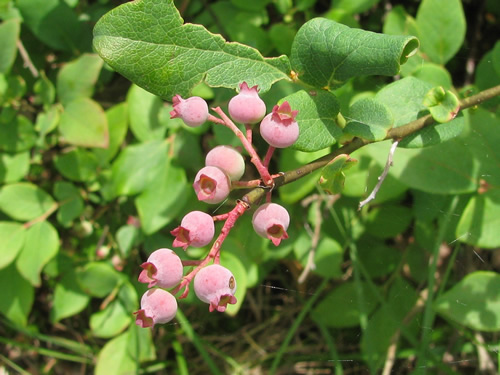
Observer: Paul Lauenstein
Observation Date: 8/11/23
Observation Time: 4:45 p.m.
Observation Location: Gavins Pond Rd. (garden in my back yard)
Common Name: Carolina Horsenettle
Scientific Name: Solanum carolinense
Comments: As the name implies, the natural range of this invasive, thorny weed is the mid-Atlantic states, but it is spreading north as the climate warms.
More Information: Minnesota Wildflowers
Observer: Paul Lauenstein
Observation Date: 6/13/20
Observation Time: 6:10 p.m.
Observation Location: Moose Hill Audubon Wildlife Sanctuary
Common Name: Catchweed Bedstraw
Scientific Name: Galium aparine
Comments: Native to North America and Eurasia, this weed is an annual broadleaf plant with a shallow, branching taproot. The stems of catchweed bedstraw are square in cross-section, weak, mostly unbranched, and grow to about 6 feet long, but are unable to stand on their own, so they often clamber over upright plant species.
Catchweed bedstraw, also known as Stickywilly, Cleaverwort, White Hedge, Goosegrass, Gripgrass, Scarthgrass, and Velcro Plant, remains low and sprawling, forming dense, tangled mats. Hairlike bristles cover the stems and leaves of the plant; these bristly hairs are responsible for its characteristic tangled growth habit and the “sticky” way it clings to clothing and animals.
Historically used as an herbal remedy for various ailments, its dried and roasted fruits have also been used to make a coffee substitute (in fact, the plant is in the same family as coffee, Coffea spp).
More Information: Washington State University
Observer: Paul Lauenstein
Observation Date: 7/12/20
Observation Time: 7:10 p.m.
Observation Location: along Gavins Pond Road
Common Name: Common Mugwort
Scientific Name: Artemesia vulgaris
Comments: Common mugwort is used as a culinary herb and medicinally throughout the world.
More Information: Botanical.com and Wikipedia
Observer: Paul Lauenstein
Observation Date: 8/13/20
Observation Time: 3:30 p.m.
Observation Location: Mountain St.
Common Name: Devil’s Beggarticks
Scientific Name: Bidens Frondosa
Comments: A summer annual that may reach as much as 3 1/2 feet in height. Devils beggarticks has prickly fruit that facilitate seed dispersal by sticking to the fur and clothing of any animal or human that brushes by this weed when mature. Devils beggarticks is primarily a weed of pastures, hay fields, roadsides, landscapes, and nurseries. It is found throughout the United States.
More information: University of Missouri
Observer: Paul Lauenstein
Observation Date: 6/28/10
Observation Time: 2:00 p.m.
Observation Location: 154 Wolomolopoag St.
Common Name: Dewberry
Scientific Name: Rubrus species
Comments: Not sure if this is Rubrus flagellaris, the northern dewberry, or some other Rubrus species such as Rubrus hispidus, the swamp dewberry.
More Information: Dewberries and Brambles: University of Massachusetts
Observer: Paul Lauenstein
Observation Date: 6/4/20
Observation Time: 11:20 a.m.
Observation Location: Moose Hill Audubon Wildlife Sanctuary
Common Name: Field Horsetail
Scientific Name: Equisetum arvense
Comments: Field horsetail, a perennial plant of genus Equisetum, is the only living representative of the very ancient and primitive class Sphenopsida, tree-sized members of which were prominent in the land vegetation of the Carboniferous era (353-300 million years ago).
More Information: Minnesota Seasons
Observer: Susan Drisko
Observation Date: 4/27/2022
Observation Time: 3:35 p.m.
Observation Location: Town-owned conservation land near Moose Hill Audubon Wildlife Sanctuary
Common Name: Green False Hellebore
Scientific Name: Veratrum viride
Comments: Green false hellebore, or giant false-helleborine, is native to eastern and western (but not central) North America. It is extremely toxic, and is considered a pest plant by farmers with livestock. The species has acquired a large number of other common names within its native range, including American false hellebore, American white hellebore, bear corn, big hellebore, corn lily, devil’s bite, duck retten, itchweed, poor Annie, blue hellebore and tickleweed.
PLEASE DO NOT DIG UP WILD PLANTS.
More Information: Wikipedia
Observer: Rita Corey
Observation Date: 8/13/20
Observation Time: 1:50 p.m.
Observation Location: Rattlesnake Hill
Common Name: Halberd-leaved Tearthumb
Scientific Name: Persicaria arifolia
Comments: Halberd-leaved tearthumb has distinctly arrow-shaped leaves with outward-pointing projections at the base. The stem is covered with small downward-curving barbs that gives this small annual wetland vine its common name. A halberd is a medieval battleaxe.
More Information: Go Botany
Observer: Paul Lauenstein
Observation Date: 5/30/10
Observation Time: 4:30 p.m.
Observation Location: Moose Hill Audubon Wildlife Sanctuary
Common Name: Highbush blueberry
Scientific Name: Vaccinium corymbosum
Comments: The northern highbush blueberry, is a North American species of blueberry which has become a food crop of significant economic importance. It is native to eastern Canada and the eastern and southern United States, from Ontario east to Nova Scotia and south as far as Florida and eastern Texas.
More Information: Highbush Blueberry
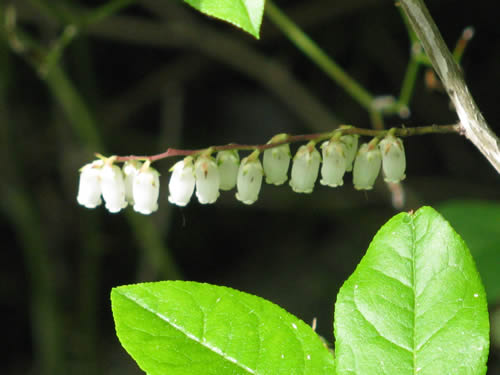
Observer: Paul Lauenstein
Observation Date: 5/22/18
Observation Time: 10:55 a.m.
Observation Location: Town-owned conservation land near Sandy Ridge Circle
Common Name: Honeysuckle
Scientific Name: Lonicera spp.
Comments: Bush honeysuckles are invasive deciduous shrubs that grow up to 20 feet tall. There are three species of bush honeysuckle common in the region including tartarian (Lonicera tatarica), Morrow’s (Lonicera morrowii), and Amur (Lonicera maackii). All species are similar in appearance, with simple, opposite, oval-shaped leaves. Honeysuckles bloom in May and June, producing fragrant white or pink flowers. Berries are round, fleshy and red. The center of twigs on invasive bush honeysuckles are hollow, a trait that distinguishes the invasive species from their native look-alikes.
More Information: Adirondack Park Invasive Plants
Observer: Paul Lauenstein
Observation Date: 5/16/23
Observation Time: 4:05 p.m.
Observation Location: Moose Hill Audubon WIldlife Sanctuary
Common Name: Indian Cucumber Root
Scientific Name: Medeola virginiana
Comments: Indian cucumber-root is a common perennial of the forest understory in New England. As the name suggests, the edible root tastes somewhat like cucumber.
More Information: Go Botany
Observer: Paul Lauenstein
Observation Date: 6/14/09
Observation Time: 7:30 a.m.
Observation Location: Moose Hill Farm, Trustees of Reservations land
Common Name: Indian Pipe
Scientific Name: Monotropa uniflora
Comments: Indian pipe, also known as ghost plant (or ghost pipe) or corpse plant, is a herbaceous perennial plant native to temperate regions of European Russia, Asia, North America and northern South America, but with large gaps between areas. It is generally rare in occurrence.
Unlike most plants, it is white and does not contain chlorophyll. Instead of generating energy from sunlight, it is parasitic, more specifically a myco-heterotroph. Its hosts are certain fungi that are mycorrhizal with trees, meaning it ultimately gets its energy from photosynthetic trees. Since it is not dependent on sunlight to grow, it can grow in very dark environments as in the understory of dense forest. It is often associated with beech trees. The complex relationship that allows this plant to grow also makes propagation difficult.
More Information: Wikipedia
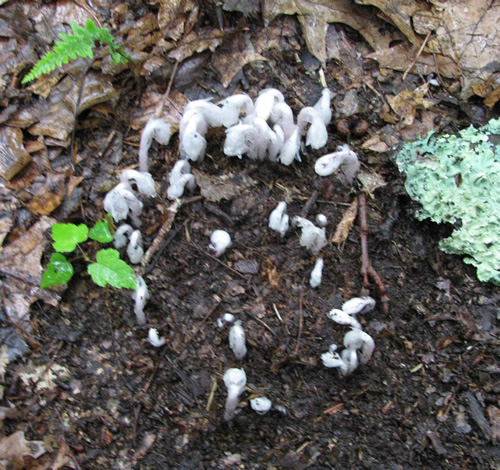
Observer: Paul Lauenstein
Observation Date: 6/23/19
Observation Time: 10:45 a.m.
Observation Location: Billings Loop Botanical Trail
Common Name: Indian Pipe
Scientific Name: Monotropa uniflora
Comments: Indian pipe, also known as ghost plant (or ghost pipe) or corpse plant, is a herbaceous perennial plant native to temperate regions of European Russia, Asia, North America and northern South America, but with large gaps between areas. It is generally rare in occurrence.
Unlike most plants, it is white and does not contain chlorophyll. Instead of generating energy from sunlight, it is parasitic, more specifically a myco-heterotroph. Its hosts are certain fungi that are mycorrhizal with trees, meaning it ultimately gets its energy from photosynthetic trees. Since it is not dependent on sunlight to grow, it can grow in very dark environments as in the understory of dense forest. It is often associated with beech trees. The complex relationship that allows this plant to grow also makes propagation difficult.
More Information: Wikipedia
Observer: Paul Lauenstein
Observation Date: 6/26/10
Observation Time: 3:20 p.m.
Observation Location: headwaters of Beaver Brook
Common Name: Indian Pipe
Scientific Name: Monotropa uniflora
Comments: Indian pipe, also known as ghost plant (or ghost pipe) or corpse plant, is a herbaceous perennial plant native to temperate regions of European Russia, Asia, North America and northern South America, but with large gaps between areas. It is generally rare in occurrence.
Unlike most plants, it is white and does not contain chlorophyll. Instead of generating energy from sunlight, it is parasitic, more specifically a myco-heterotroph. Its hosts are certain fungi that are mycorrhizal with trees, meaning it ultimately gets its energy from photosynthetic trees. Since it is not dependent on sunlight to grow, it can grow in very dark environments as in the understory of dense forest. It is often associated with beech trees. The complex relationship that allows this plant to grow also makes propagation difficult.
More Information: Wikipedia
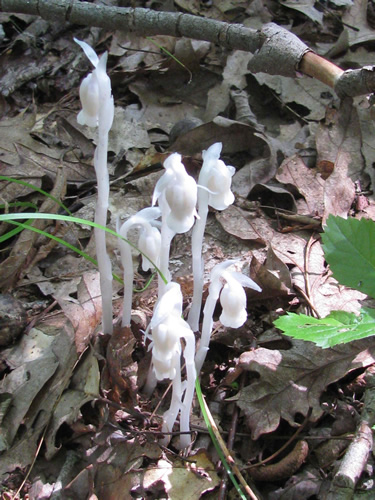
Observer: Paul Lauenstein
Observation Date: 9/4/20
Observation Time: 1:20 p.m.
Observation Location: Moose Hill Farm
Common Name: Indian Pipe
Scientific Name: Monotropa uniflora
Comments: Indian pipe, also known as ghost plant (or ghost pipe) or corpse plant, is a herbaceous perennial plant native to temperate regions of European Russia, Asia, North America and northern South America, but with large gaps between areas. It is generally rare in occurrence.
Unlike most plants, it is white and does not contain chlorophyll. Instead of generating energy from sunlight, it is parasitic, more specifically a myco-heterotroph. Its hosts are certain fungi that are mycorrhizal with trees, meaning it ultimately gets its energy from photosynthetic trees. Since it is not dependent on sunlight to grow, it can grow in very dark environments as in the understory of dense forest. It is often associated with beech trees. The complex relationship that allows this plant to grow also makes propagation difficult.
More Information: Wikipedia
Observer: Paul Lauenstein
Observation Date: 10/7/10
Observation Time: 3:15 p.m.
Observation Location: end of Lee Road
Common Name: Japanese Barberry
Scientific Name: Berberis thunbergii
Comments: This specimen was a few yards beyond the end of Lee Road near the Atlantic White Cedar Swamp drainage ditch. Japanese barberry is often planted for hedges, and easily spreads to natural areas, as this specimen evidently did.
“In recent years the plant has been recognized as an invasive species in parts of the eastern United States; it is avoided by deer and has been replacing native species. Further, the plant raises the pH of the soil and affects its nitrogen levels. In Canada its cultivation is prohibited as the species can act as a host for Puccinia graminis (black rust), a rust disease of wheat. Currently there are breeding and selection programs aimed at producing cultivars that are either sterile or produce relatively little seed.” Wikipedia
More Information: Wikipedia
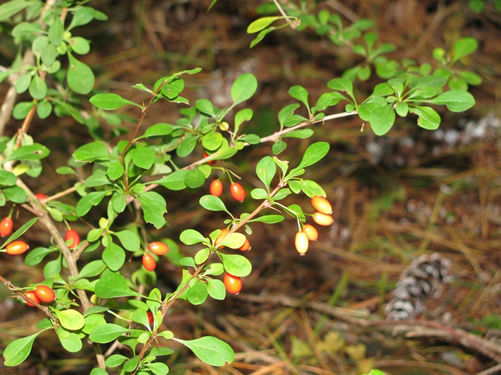
Observer: Paul Lauenstein
Observation Date: 7/12/20
Observation Time: 6:45 p.m.
Observation Location: along Gavins Pond Road
Common Name: Oriental Bittersweet
Scientific Name: Celastrus orbiculatus
Comments: This non-native invasive species comes from Asia. It grows as a vine that smothers plants and can topple trees due to its weight.
It was introduced into the United States around 1860 as an ornamental plant. In fall, it produces attractive red and orange berry-like fruit. The stems are cut and used for decoration, which unfortunately facilitates its spread.
Here’s a short video explaining how to get rid of Oriental Bittersweet: https://www.youtube.com/watch?v=bRplW9_UhKg
Observer: Paul Lauenstein
Observation Date: 6/26/10
Observation Time: 5:15 p.m.
Observation Location: Beaver Brook headwaters area
Common Name: Partridgeberry
Scientific Name: Mitchella repens
Comments: Called “noon kie oo nah yeah” in the Mohawk language.
More Information: US Forest Service
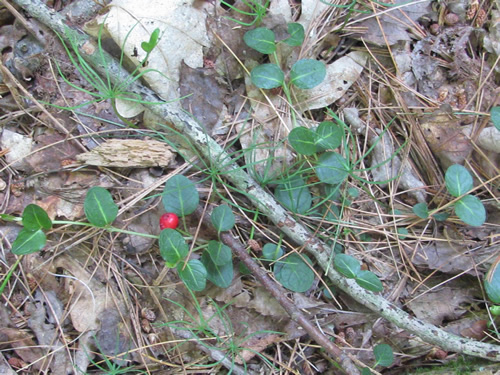
Observer: Paul Lauenstein
Observation Date: 5/23/18
Observation Time: 9:35 a.m.
Observation Location: Moose Hill Farm (TTOR)
Common Name: Poison Ivy
Scientific Name: Toxicodendron radicans
Comments: Everyone should learn to identify poison ivy and avoid contact with its glossy, notched leaves. As both its common name and its scientific name suggest, the triplicate leaves of this plant can cause an intensely itchy rash that lasts for weeks. Jewelweed, which often grows near poison ivy, is also an antidote for poison ivy.
Poison ivy is often seen in disturbed areas along roads and paths, but it can also climb up trees as a thick vine. When ripe, the white fruits are a favorite food of many migrant and game birds, as well as white-tailed deer. The seeds are adapted for sprouting after digestion softens the seed coat.
More Information: Go Botany
Observer: Paul Lauenstein
Observation Date: 5/25/23
Observation Time: 6:45 a.m.
Observation Location: Moose Hill Audubon Wildlife Sanctuary (wetland boardwalk)
Common Name: Poison Sumac
Scientific Name: Toxicodendron vernix
Comments: Everyone should learn to identify poison sumac and avoid contact with it. As both its common name and its scientific name suggest, the leaves of this plant can cause an itchy rash.
Poison sumac is often found in marshy areas.
More Information: Healthline
Observer: Paul Lauenstein
Observation Date: 5/29/14
Observation Time: 11:30 a.m.
Observation Location: Borderland State Park
Common Name: Purple pitcherplant
Scientific Name: Sarracenia purpurea
Comments: This carnivorous plant captures and digests hapless insects.
More Information: Harvard Forest
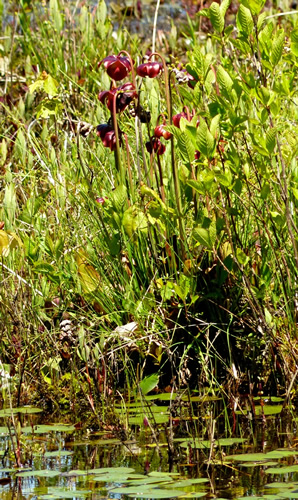
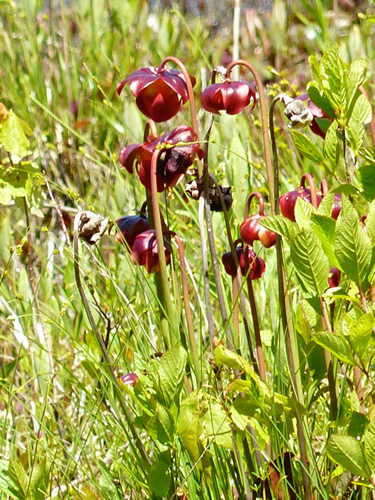
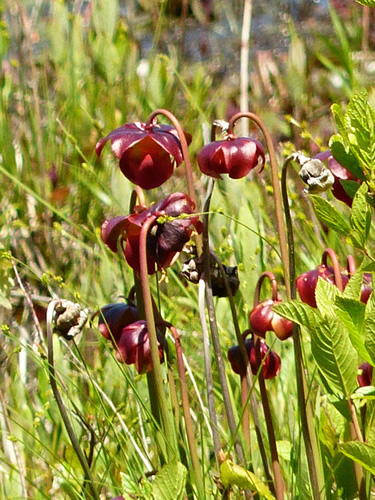
Observer: Paul Lauenstein
Observation Date: 4/13/13
Observation Time: 5:50 p.m.
Observation Location: near Gavins Pond
Common Name: Pussy Willow
Scientific Name: Salix discolor
Comments: The fuzzy nubs that appear on pussy willows in early spring are actually flowers just before they fully bloom. The species most commonly called pussy willow in the Northeast, Salix discolor, is a small, shrubby species of willow that can be found dotting wetlands and moist woods throughout much of North America.
More Information: Brooklyn Botanic Garden
Observer: Paul Lauenstein
Observation Date: 6/9/19
Observation Time: 4:05 p.m.
Observation Location: trail near Brook Road
Common Name: Three-leaved Rattlesnake Root
Scientific Name: Nabalus trifoliolatus
Comments: The leaves of this species of rattlesnake root look quite different from the arrowhead-shaped leaves of other kinds of rattlesnake root.
More Information: GoBotany
Observer: Paul Lauenstein
Observation Date: 6/9/19
Observation time: 2:50 p.m.
Observation Location: along trail near Brook Road
Common Name: Roundleaf Greenbriar
Scientific Name: Smilax rotundifolia
Comments: Greenbriar vines, often found near wetlands, have glossy, rounded leaves and large, sharp thorns. The tips of the vines are edible.
More information: Marblehead Conservancy
Observer: Paul Lauenstein
Observation Date: 5/23/23
Observation Time: 7:00 a.m.
Observation Location: Moose Hill Audubon Wildlife Sanctuary
Common Name: Sapphire Berry
Scientific Name: Synplocos paniculata
Comments: Sapphire Berry is a non-native shrub. Since it is a non-native species that spreads and displaces native plants, the specimen shown in the photo will be removed.
More Information: Wikipedia
Observer: Paul Lauenstein
Observation Date: 5/17/20
Observation Time: 10:10 a.m.
Observation Location: woods near Gavins Pond
Common Name: Sarsaparilla
Scientific Name: Aralia nudicaulis
Comments: On a whim, I decided to photograph a random plant along the trail in the woods. A friend helped me identify it, and it turned out to have a story!
Wild sarsaparilla is a 1-2 foot tall shrub common to the forest understories of southern New England. It produces tiny white flowers in spherical clusters beneath the compound leaves, which ripen into blue-black berries in mid-summer. The rhizome of wild sarsaparilla has a sweet, aromatic taste, and sometimes has substituted for sassafras in the making of home-made root beer.
More Information: Go Botany
Observer: Paul Lauenstein
Observation Date: 4/16/19
Observation Time: 1:50 p.m.
Observation Location: Moose Hill Audubon Wildlife Sanctuary
Common Name: Skunk Cabbage
Scientific Name: Symplocarpus foetidus
Comments: Skunk cabbages are among the first plants to emerge in early spring. They can maintain an internal temperature significantly warmer than the surrounding air – as much as 15-35 degrees warmer – by consuming carbohydrates stored in their fleshy rhizomes. The warmth they generate helps in attracting cold-blooded, early-emerging pollinating insects in early spring when temperatures are typically quite chilly.
More Information: National Park Service
Observer: Paul Lauenstein
Observation Date: 6/24/10
Observation Time: 3:40 p.m.
Observation Location: Beaver Brook near tennis courts
Common Name: Skunk cabbage
Scientific Name: Symplocarpus foetidus
Comments: Tearing a leaf produces a pungent but not harmful odor, the source of the plant’s common name; it is also foul smelling when it blooms. The plant is not poisonous to the touch. The foul odor attracts pollinators, such as scavenging flies, stoneflies, and bees. The odor in the leaves may also serve to discourage large animals from disturbing or damaging this plant which grows in soft wetland soils.
Eastern skunk cabbage is notable for its ability to generate temperatures of up to 15–35 °C (27–63 °F) above air temperature by cyanide resistant cellular respiration in order to melt its way through frozen ground, placing it among a small group of thermogenic plants. Even though it flowers while there is still snow and ice on the ground, it is successfully pollinated by early insects that also emerge at this time. Carrion-feeding insects that are attracted by the scent may be doubly encouraged to enter the spathe because it is warmer than the surrounding air, fueling pollination.
Eastern skunk cabbage has contractile roots which contract after growing into the earth. This pulls the stem of the plant deeper into the mud, so that the plant in effect grows downward, not upward. Each year, the plant grows deeper into the earth, so that older plants are practically impossible to dig up. They reproduce by hard, pea-sized seeds which fall in the mud and are carried away by animals or by floods.
More Information: Wikipedia
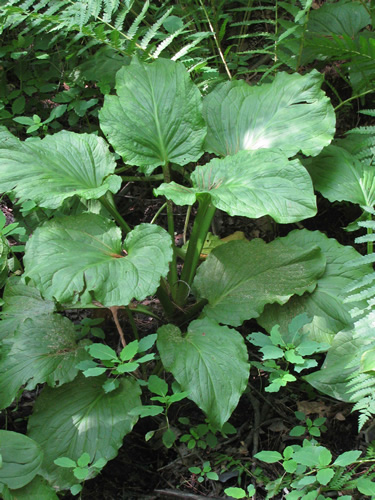
Observer: Paul Lauenstein
Observation Date: 6/13/20
Observation Time: 6:15 p.m.
Observation Location: Moose Hill Audubon Wildlife Sanctuary
Common Name: Spreading Dogbane
Scientific Name: Apocynum androsaemifolium
Comments: Spreading dogbane is a showy member of the dogbane family (Apocynaceae) that is found in nearly all of the 50 states except some in the southeast. The common name, dogbane, and the genus name, “Apocynum,” meaning “away from dog,” are testaments to the toxic nature of this plant, not only to dogs, but to humans, livestock, and other mammals as well. The plant is poisonous due to the cardiac glycosides it contains.
Spreading dogbane is common in North America, and is widespread across most of the United States and Canada, and in Alaska, California, and northeast Mexico.
More Information: U.S. Forest Service
Observer: Paul Lauenstein
Observation Date: 7/25/10
Observation Time: 11:10 a.m.
Observation Location: Gavins Pond Road
Common Name: Staghorn Sumac
Scientific Name: Rhus typhina
Comments: Staghorn sumac grows in gardens, lawns, the edges of forests, and wasteland. It can grow under a wide array of conditions, but is most often found in dry and poor soil on which other plants cannot survive. Some landscapers remove all but the top branches to create a “crown” effect in order to resemble a small palm tree.
More Information: Wikipedia
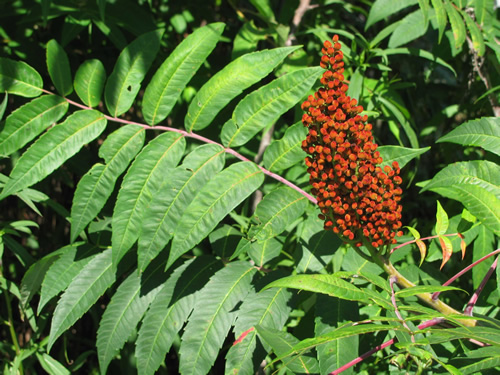
Observer: Paul Lauenstein
Observation Date: 7/12/20
Observation Time: 7:15 p.m.
Observation Location: along Gavins Pond Road
Common Name: Summer Grape
Scientific Name: Vitis aestivalis
Comments: Vitis aestivalis, the summer grape, or pigeon grape, is a species of grape native to eastern North America from southern Ontario east to Maine, west to Oklahoma, and south to Florida and Texas. It is a vigorous vine, growing to 10 m or more high in trees.
Unlike most other species in genus Vitis, V. aestivalis does not propagate well through dormant cuttings. This has been a limiting factor for its use in commercial viticulture despite the species’ promising oenological characteristics.
More Information: Wikipedia
Observer: Paul Lauenstein
Observation Date: 5/23/10
Observation Time: 3:00 p.m.
Observation Location: near Gavins Pond
Common Name: Sweetfern
Scientific Name: Comptonia peregrina
Comments: Sweetfern leaves are very aromatic. Edible fruit ripens in July and August. Sweetfern partners with actinomycete fungus that live in its root nodules to fix atmospheric nitrogen, so it can flourish in infertile soil. The soil in the area near Gavins Pond is relatively infertile because fill for the nearby Highway I-95 was taken from this area. It appears on some maps as “Sand Pits.”
The common name, sweetfern, is confusing, as it is not a fern. It is a deciduous shrub, growing to a maximum of five feet tall.
More Information: Wikipedia
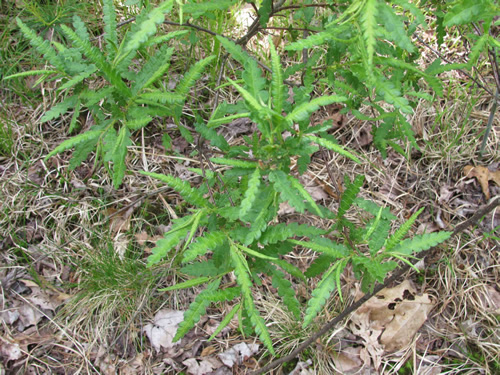
Observer: Paul Lauenstein
Observation Date: 9/7/20
Observation Time: 5:30 p.m.
Observation Location: Conservation land at Morse & Lakeview
Common Name: Wild Grapes
Scientific Name: Vitis spp.
Comments: Wild grapevines are native to eastern North America.
I smelled these wild grapes before I saw the grapevine laden with purple fruit climbing a tree beside the trail.
Be careful not to confuse wild grapes, which are edible, with Canadian Moon Seeds, which are poisonous.
More Information: Identifying Wild Grapes or Gardening Knowhow
Observer: Paul Lauenstein
Observation Date: 7/7/18
Observation Time: 12:50 p.m.
Observation Location: Moose Hill Farm (TTOR)
Common Name: Wild Onion or Crow Garlic
Scientific Name: Allium vineale
Comments: Instead of flowers, they have bulbils, which are miniature sprouts not unlike garlic cloves.
Observer: Paul Lauenstein
Observation Date: 10/2/13
Observation Time: 12:15 p.m.
Observation Location: woods near Beaver Brook
Common Name: Wild Sarsaparilla
Scientific Name: Aralia nudicaulis
Comments: You might know Sarsaparilla as a sweet soft drink that was first introduced in the 19th century. Wild sarsaparilla is a common plant found in the northern and eastern parts of North America and grows on creeping underground stems. This plant was used as food when hunting or during wars because it was so sustaining. Wild sarsaparilla had a much wider use among native people because of its many medicinal purposes that treated everything from sores to toothaches.
While going through old photos on my computer, I came across this photo of yellow leaves. I opened an app on my cell phone called Seek by iNaturalist and pointed the phone at my computer monitor. The app immediately identified the leaves as wild sarsaparilla.
More Information: Stories from the Wigwam
Observer: Paul Lauenstein
Observation Date: 4/27/23
Observation Time: 3:30 p.m.
Observation Location: Moose Hill Farm (TTOR) along dirt road under high tension wires
Common Name: Wild strawberry
Scientific Name: Fragaria virginiana
Comments: Found in patches in fields and dry openings, this plant produces tasty strawberries.
More Information: Lady Bird Johnson Wildflower Center

